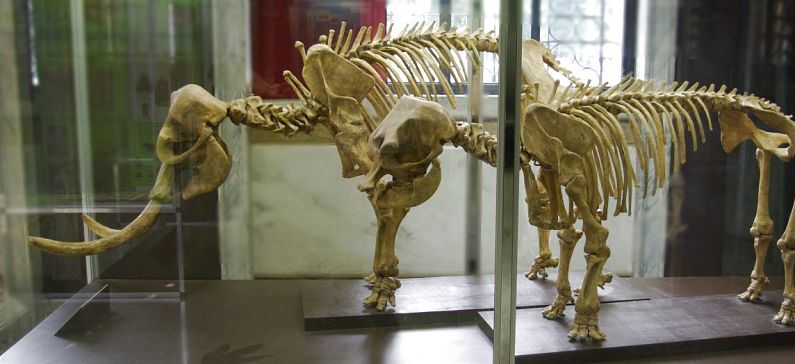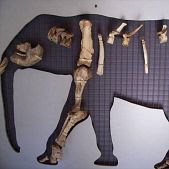
3D Tilos dwarf elephant at the Museum of Paleontology and Geology
An exhibition entitled «Elephas tiliensis. Dwarf and three-dimensional” began Wednesday, September 1 at the Museum of Geology and Paleontology of the National University of Athens, in the building of the Faculty of Science. It is about the Tilos Dwarf Elephant, the last elephant of Europe who arrived on the island by swimming from Minor Asia 45,000 years ago.
The peculiarity of the exhibition is that the researchers were able to collect samples to replicate with CT scanners and laser scanners, to turn them into three-dimensional models, calculating the correct dimensions and then print them in 3D printer.
“This is an innovative, modern methodology that allowed us to get closer to an ideal form of Tilos elephant and for the first time to have a mounted three-dimensional frame, which we set up,” said the outgoing director of the Museum, Professor George Theodorou to ANA-MPA .
Visitors have the opportunity to see up close an extinct spicies in three-dimensional form, and be informed about the methodology of the excavations, the original material from excavations, but also to compare the old methodology of replicating fossils with the modern methodology that allows construction by printing samples to scale.
The former director of the Museum of Geology and Paleontology of the National University of Athens, Professor George Theodorou, underlines that “the university excavates in Tilos from 1971 until today. We have a cave, Charkadio, discovered by Professor Nicholas Symeonidis. This cave is home to a plethora of materials of the elephants. We gave the name ’tiliensis’ in 2007, because it disappeared in Tilos 3500 years ago and reached the island at least 45,000 years ago”.
The elephant of Tilos is estimated that it reached about 1.5 meters and weighed about 500-600 pounds and lived probably 40-50 years. The Tilos dwarf elephant is the first dwarf elephant whose DNA sequence has been studied. The results of this research are consistent with previous morphological reports, according to which Palaeoloxodon is more closely related to Elephas than to Loxodonta or Mammuthus.
The exhibition will be open to the public from 9 am to 13.30 pm and will last until the beginning of 2017.









